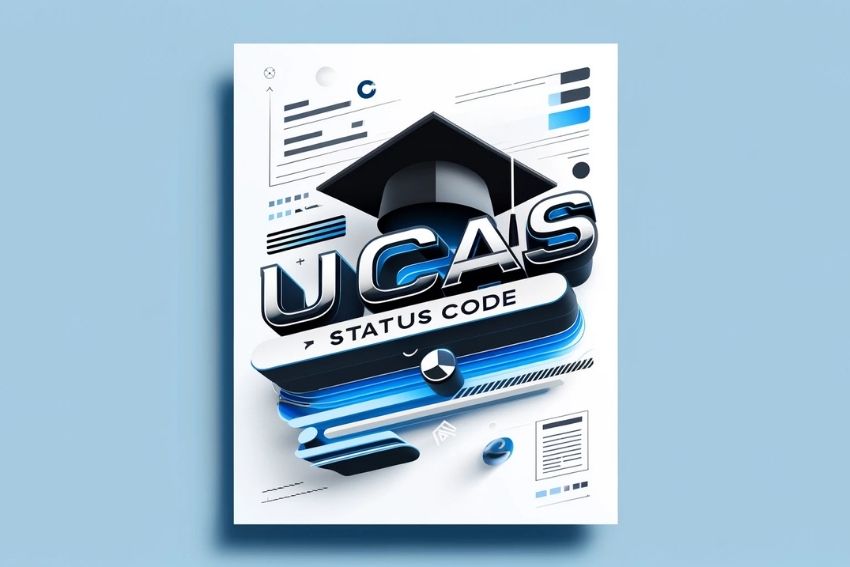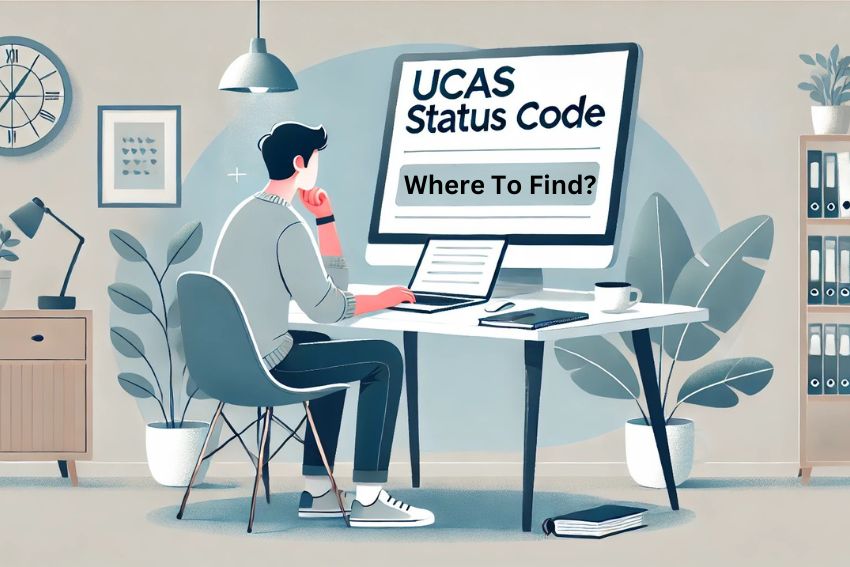UCAS Status Code Explained: Everything You Need to Know
The UCAS status code is an essential part of applying to universities in the UK. Managed by the Universities and Colleges Admissions Service (UCAS), it simplifies your application process by allowing you to apply to multiple universities through one platform. UCAS also helps you track your progress and calculate your UCAS points, which are key to meeting university requirements.
The UCAS status code is a unique identifier that keeps your university application organised and easy to track. It plays an important role in helping universities identify your application and can also be used for practical tasks like opening a student bank account.
You may encounter a 16 digit UCAS code or a UCAS 4 digit status code, depending on the situation. Both are crucial for ensuring smooth communication between you, UCAS, and universities. If you’re wondering where to find your UCAS status code, you can usually locate it in your UCAS Hub account or in emails sent after you submit your application.
UCAS code is your key to managing your application successfully and accessing important services along the way. In this blog, we’ll explore everything you need to know about the UCAS status code. From understanding its meaning to knowing where to find your UCAS status code, we’ll guide you through every step

What is the UCAS Status Code?
The UCAS status code is a unique identifier that simplifies the application process by helping you track progress and access updates. It ensures that your application is correctly identified by universities and connected to your personal details. Beyond tracking, the code can be used for practical tasks, like setting up a Santander student bank account or verifying your application status.
The UCAS status code meaning goes beyond just a number-it’s a key tool for staying informed about your application. Whether you’re calculating UCAS points or following up on offers, this code plays an important role in keeping everything organised.
UCAS Status Code: 4-Digit vs 16-Digit
You might encounter two types of UCAS codes: the UCAS 4 digit status code and the 16 digit UCAS code. While both are essential, they serve different purposes.
The 4 digit UCAS status code is often used for verifying specific details during certain steps of the application process. Meanwhile, the 16 digit UCAS code is typically linked to your overall application and is required for broader tasks, such as accessing your UCAS Hub account or opening a bank account.
Thus, understanding these codes and their roles is important for navigating your application smoothly. Always make sure you know how to locate them and use them effectively.
Where to Find Your UCAS Status Code
If you’re asking where to find your UCAS status code, the easiest place is the UCAS Hub. Log in with your email and password, and you’ll find your 16 digit UCAS code in your application details. This code is essential for tracking your application, accessing updates, and completing tasks like opening a student bank account.
Alternative Ways to Retrieve the Ucas Code
If you can’t access the UCAS Hub, don’t worry. Check the confirmation email UCAS sent after you submitted your application. It usually includes your 16 digit UCAS code.
For some processes, like specific verifications, you may need the 4 digit UCAS status code. You can often find this in follow-up emails or by contacting UCAS support directly. If you’re still unsure where to find your 4 digit UCAS code, their support team is always ready to help.
So, keep your codes safe and accessible to ensure smooth management of your application. Let them simplify your university application journey.
Practical Uses of the UCAS Status Code
Your UCAS status code is essential when setting up a student bank account. Many banks, including Santander, require this code to confirm your student status. When opening a Santander student bank account, for instance, your UCAS number helps verify that you’re enrolled in a university. This process makes it easier to access student perks, like fee-free banking or overdrafts. Always have your 16 digit UCAS code ready to ensure a smooth application.
UCAS Status Code: Your Key to Proving Student Status
Your UCAS status code is more than just an application tracker-it’s also a way to prove your student status. You may need it when applying for scholarships, discounted travel passes, or even student housing. Universities and organisations often use your UCAS number to confirm your enrolment and eligibility. Additionally, your UCAS points might be requested during academic evaluations or qualification reviews.
Therefore, by keeping your UCAS code accessible, you can simplify many essential processes during your university journey. It’s a small detail that makes a big difference!
UCAS Application Status and Next Steps
When you apply through UCAS, your application will progress through several statuses. Each status tells you where your application stands in the process.
- Received: This means your application has been successfully submitted and acknowledged by UCAS.
- In Progress: Your application is being reviewed by the universities you applied to.
- Conditional Offer: A university has offered you a place, but you need to meet specific requirements, like grades or UCAS points.
- Unconditional Offer: You have met all the requirements, and the university has confirmed your place.
Each status is linked to your UCAS number or UCAS status code, which helps you track updates. If you’re wondering where to find your UCAS code, it’s always available in your UCAS Hub or confirmation emails.
Actions Based on Your Application Status
What you should do next depends on your current application status.
- If your status is Received or In Progress, ensure your details are accurate. Double-check your qualifications and UCAS status code for any errors.
- For a Conditional Offer, focus on meeting the conditions set by the university. This could mean working towards specific grades or earning the required UCAS points.
- If you have an Unconditional Offer, celebrate your success and start preparing for the next steps, like arranging a student bank account or finalising accommodation.
Accordingly, by understanding these statuses and knowing how to find your UCAS status code, you can stay in control of your application and make informed decisions at every stage. Let your UCAS Hub be your go-to resource throughout this journey.

Lost Your Status Code? Here’s How to Find It
If you’re facing UCAS status code issues and can’t locate your code, don’t worry-there are easy ways to resolve this. First, check the confirmation email UCAS sent when you submitted your application. This email usually includes your UCAS status code and other important details.
But, if the email is inaccessible, log into the UCAS Hub using your credentials. The code will be displayed under your application details. If you’re still unsure where to find your UCAS status code, contacting UCAS support is your next best option. Their team can guide you on how to find your UCAS status code quickly.
Stuck? Fix Your UCAS Status Code Issues Easily
In reality, sometimes discrepancies may appear in your application, like mismatched codes or incorrect statuses. If you notice such UCAS status code issues, verify all the information in your UCAS Hub. Ensure your qualifications, UCAS points, and personal details are accurate.
On the other hand, If the problem persists, reach out to UCAS support. They can investigate and resolve errors linked to your UCAS status code or application status. Acting promptly will help avoid delays and ensure your application stays on track.
As a result, by staying proactive and knowing where to find your UCAS status code, you can resolve common issues and keep your application process smooth. Let UCAS support be your safety net for troubleshooting.
You might also be curious about:
Conclusion
Thus, Understanding the UCAS status code is essential for successfully managing your university application. Whether it’s the 16 digit UCAS code for tracking your application or the UCAS 4 digit code for specific verifications, knowing how to use these codes can make the process smoother. Your UCAS number acts as a key to accessing updates, verifying your student status, and handling practical tasks like opening a student bank account.
But, If you’re still unsure where to find your UCAS status code, remember the UCAS Hub is your go-to resource. Checking it regularly ensures you stay updated on your application status and next steps. Also, don’t forget to keep these codes handy for future needs, like applying for scholarships or arranging student services.
Finally, if you’re feeling overwhelmed, consider seeking extra help. Online tutors can provide guidance on navigating the UCAS process while also helping you prepare for university life. Their personalised support can make a big difference in managing your academic journey with confidence.
So, keep track, stay organised, and let your UCAS status code simplify your path to success!
FAQs
What is the UCAS code?
The UCAS code is a unique identifier assigned to your university application. It allows you to track your application and is often required for student services, such as opening a bank account.
Where can I find my UCAS status code?
You can find your UCAS status code in your UCAS Hub account under your application details. Alternatively, check your confirmation email or contact UCAS support if needed.
What is the UCAS 4 Digit Code?
The 4 digit UCAS code is typically used for specific verifications, like confirming certain details with UCAS or universities. It may appear in follow-up communications or can be obtained from UCAS support.
What is the 16 Digit UCAS Code?
The 16 digit UCAS code is the primary identifier for your application. It is used for tracking updates and accessing key student services.
What if I don't have a UCAS code?
If you don’t have a UCAS code, check your confirmation email or log into your UCAS Hub. If it’s still missing, contact UCAS support for assistance.
Can I open a student bank account without a UCAS code?
Most banks, like Santander, require your UCAS code as proof of student status. Without it, you might face delays or need alternative verification, like an offer letter.








